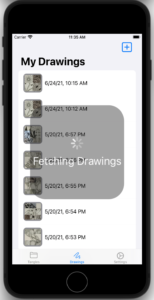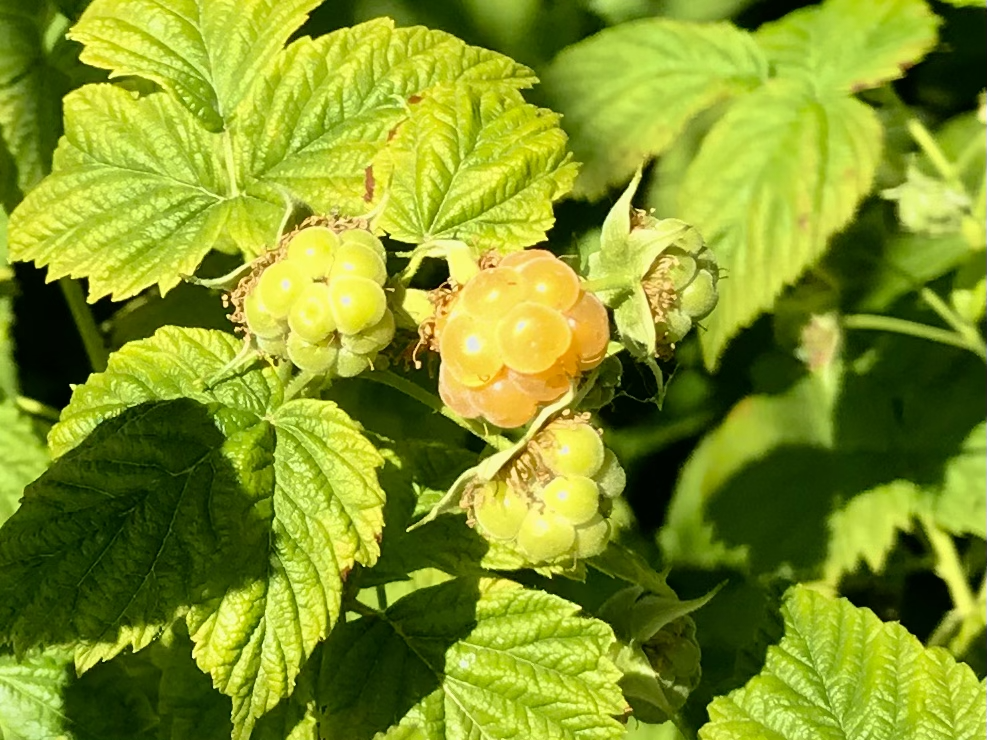Proud eagle standing
On its razor sharp talons
Holding a seagull
Ginko leaves fall
And flutter in a wind storm
Look like little finches
Proud eagle standing
On its razor sharp talons
Holding a seagull
Ginko leaves fall
And flutter in a wind storm
Look like little finches
Going to restart
My effort to write haiku
again. wish me luck.
I will publish them
As I write them. Generate
momentum I hope.
The above don’t count.
No references to nature
Same problem here. Tree.
Beautiful red birds
Their plumage looks like horse blood
Even in the shade
The leaves are falling
mostly in wet goopy piles
In the gutter. Ugh.
October was wet.
Many dark and rainy days
Occasional sun.
While working on my zentangles app, I added a spinner that appears when the app is fetching or saving data to CloudKit. This appeared to be working wonderfully. But then I tried using the app when I didn’t have access to the network. The spinner appeared and never disappeared.

Not Good!
I immediately thought of a couple of things that might fix the problem. Things like setting the time out for the network operation, using the Reachability frame work to detect when there was no network. But when I attempted to set the CKOperation’s time out, Xcode told me I was using a deprecated function, and I should really be using CKOperationConfiguration. Groan! I thought. This new things is likely just helping some obscure use case that doesn’t apply to me.
Sure enough CKOperationConfiguration has a timeout interval property, to let me do what I thought I needed to do. But then I noticed another property called qualityOfService that can have one of the following values: background, utility, default, userInitiated, userInteractive. Hmm, the header describes the behaviour for these different values…

As an aside, I find myself a bit confused on the subject of timeout intervals. It appears the operation’s configuration has a default timeout of 60 seconds. When I run in a simulator and disable networking on my computer, it appears to time out after 10 seconds When I run on an iPad, not on any networks, it appears to never time out. <Shrug Emoji>
Regardless of timeout confusion QualityOfService is a much smarter way to describe a network operation. When I set QualityOfService to UserInteractive and then attempted a fetch on a device with no network, the operation immediately failed. (likely thanks to internally using Reachability?) Awesome!
I do still have a couple of questions about Quality of Service.
Haven’t been super.
Writing one every day is
hard for me. Learning.
Haiku is easy.
Making time is harder.
Open to suggestions.
Rosemary Rocksalt makes
delicious bagels. Poppy,
sesame are yummy.
Seem to be slipping
I missed three days. Must get
back into my groove
Dogs were here for a
Few days. Piper and Cooper
They were a handful!
Got my Moderna
On Sunday. My arm is sore.
Otherwise ok
Heat wave is coming
Temperature is climbing
Stay cool and stay safe
I recently came across a quote that is playfully witty and wise. The character that is speaking is nine years old and has been home schooling, but now is facing the prospect of switching to learning in an actual school. Unfortunately she is reluctant. She is also a very clever lovable free spirit.
Sasha, the main character in the book, has just suggested that going to school will allow Nina to broaden her horizons. After she first asked Sasha to clarify what is meant by broadening one’s horizons, she says this:
Rather than sitting in orderly rows in a schoolhouse, wouldn’t one be better served by working her way toward an actual horizon, so that she could see what lay beyond it?
Nina Kulikova in A Gentleman in Moscow by Amor Towles
I find myself agreeing with her assertion. (as somebody who has occasionally enjoyed working his way toward actual horizons) But I also find myself confoundedly disagreeing (as a parent who has sometimes had to tell kids they need to do something they don’t want to do.)
For better or worse, Nina does go to school and is eventually swept up in life trials and tribulations. I don’t know if she would have been better served by heading toward actual horizons instead of the school house.
I suspect the people close to me have noticed that I spend a lot of time looking at license plates. As kids, we would spend our time in the car searching for license plates and then trying to find words that used the letters on the license plate. (of course in the order they appeared on the plate.) So for example, for VCM 620 the first word I think of is ‘vacuum.’
As we got older, we’d get bonus points for things like having the first letter on the plate not be the first letter of the word. We would usually start by trying to get away with something like ‘revacuum’ or even ‘revacuumed’ to also pad the end of the word. But with time it became seen as lame to mindlessly stick a prefix and/or suffix on a word. Eventually we would aspire to have the first and last letters truly embedded. ‘Servicemen’ is a word, right?
I definitely don’t remember every license plate of every car we’ve ever owned, but I do remember quite a few. GEK is an early one I remember. We had an NBA for quite a long time. The first car I bought myself was an SKV. Our current car is an XAD. More than once, I think I’ve weirded out friends by knowing their license plates.
Sadly as the number of cars on the road continues to grow, the arrangements of letters and numbers on plates get more varied and creative. Ontario, for example, use 4 letters and three digits. BC has recently moved to AB1 23C as the format of choice. The headache for the Ontario scheme is making sure no curse words make it on any plates. (Three letter plates obviously have a much shorter list of words to contend with)
My current license plate game is to turn the numbers into a letter that they look like and seeing if the resulting ‘word’ can be pronounced or even better have some sort of meaning. The numbers map to letters as follows:
Following these rules, one of my favourite finds is CR8 04K which would be “Crate Oak”
I thought I’d try a suggestion from Gretchen Rubin. Write a Haiku everyday. I’m planning on publishing this approximately every seven days.
Sunshine on my face
Mostly feels good but maybe
Less warm is better
Yummy peas growing
On very tippy lattice
Taste so crunchy good
Lovely irises
Translucent purple from
The sun shining through
I feel a fly that
Is walking among leg hairs
Not gonna smack him
I see evil faces
In the reflected water
Upon the table
Stanley Park Seawall
Has become my happy place
Beautiful, tranquil
Start with five syllables
Next a line of seven more
Then the final five
Little ants walking
Relentlessly up the chair.
Where are they going?
Stuck on a puzzle
A sudoku idea
Eureka, it’s done!
When the rain begins
For a while, it’s dry under
trees. Then drip drop drip.
Pure Bread Bakery
Has so many yummy treats.
Ooey-Gooey bar!
I’m on the couch now
But I had an active day
Such defensiveness!
It makes me happy to see that our raspberries will be ripe soon. We have a thriving colony of Golden Raspberries (the orange ones).

Most days, I bike around the stanley park seawall. Some days, I stop to take photos of the remarkable scenery. Other days I take photos of graffiti on train cars. Some days, ok most days, I do multiple loops around the park.
When the weather is sketchy, I’ll take my commuter bike called Ada. On bright sunny days, I’ll usually take my fancy Pinarello racing bike.
I’ve seen seals, otters, coyotes, goslings, ducklings, and a marmot/ferret. One day I even saw a whale. (oddly enough, a few days after writing this draft post, I saw another whale)
The path is populated by cyclists, rollerbladers, walkers, joggers, photographers, readers and fishers. Approximately one third of the people I see are regulars, that I see more than once per week. There is one woman I’ve seen a couple of times who likes to yell at me that I should be on the road, not the bike path. I try not to take it personally.
Sometimes I take the road, but I do prefer the path, as it’s right on the ocean.
I feel a titch disingenuous writing about riding in Stanley Park without discussing my Strava Local Legend situation. Still, I’m going to save that for another post.

No this does not refer to the Western Washington Debutantes Convention. Today is the first day of Apple’s World Wide Developers Conference. For anyone who writes software for iPhones, iPads, Watches, and Apple computers, it tends to be a very exciting week.
Sometimes there are new hardware announcements and releases. Other times there are big technology changes, such as a new development language (eg Swift!). Every time there are a lot of new technology announcements, that are usually obscure as heck. (eg. a new interface for coding In App Purchases)
Buried among the intimidating amount and complexity of detailed information, there are usually a few fun nuggets of new things I find very cool. So far this year, the best example of this is a new feature in the photos app that detects text in photos. Users will be able to copy text in photos and paste it into any other apps. They will also be able to detect and call phone numbers when they show up in photos. Crazy!
Before Covid, the conference was in San Francisco and the information was really only available to people who attended in person. Some time in the past 10 years the conference became ridiculously over subscribed and it became a lottery to be able to attend. At about the same time the information from all the presentations was made available on line.
The last two years, due to Covid, the conference was entirely online and free for everyone. (Attending in person in previous years typically cost ~$1500 USD.)
I have been to WWDC twice, once in 2004 and once in 2010. In 2004, I was attending with a co-worker who was very much a night owl. He would typically arrive at work around 11am. At WWDC I was very perplexed when he insisted we arrive at 6am for the Keynote Address on the first day that didn’t start until 10am.
When we arrived at 6am, there were already hundreds of people in line. I later realized this was most likely due to the personality cult around Steve Jobs. While I’d like to think I wasn’t susceptible to his reality distortion field, it was still pretty exciting to be in the room for his presentations.